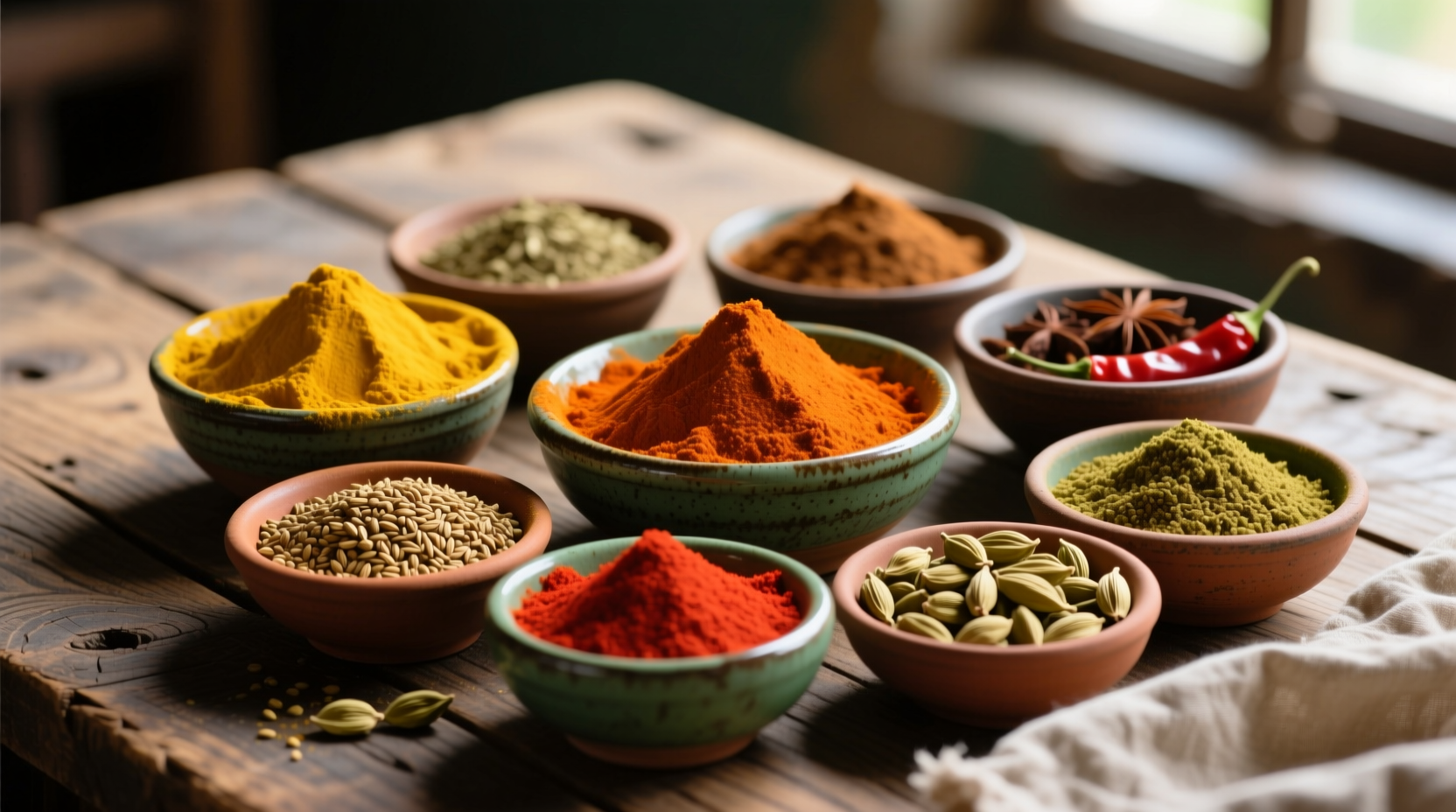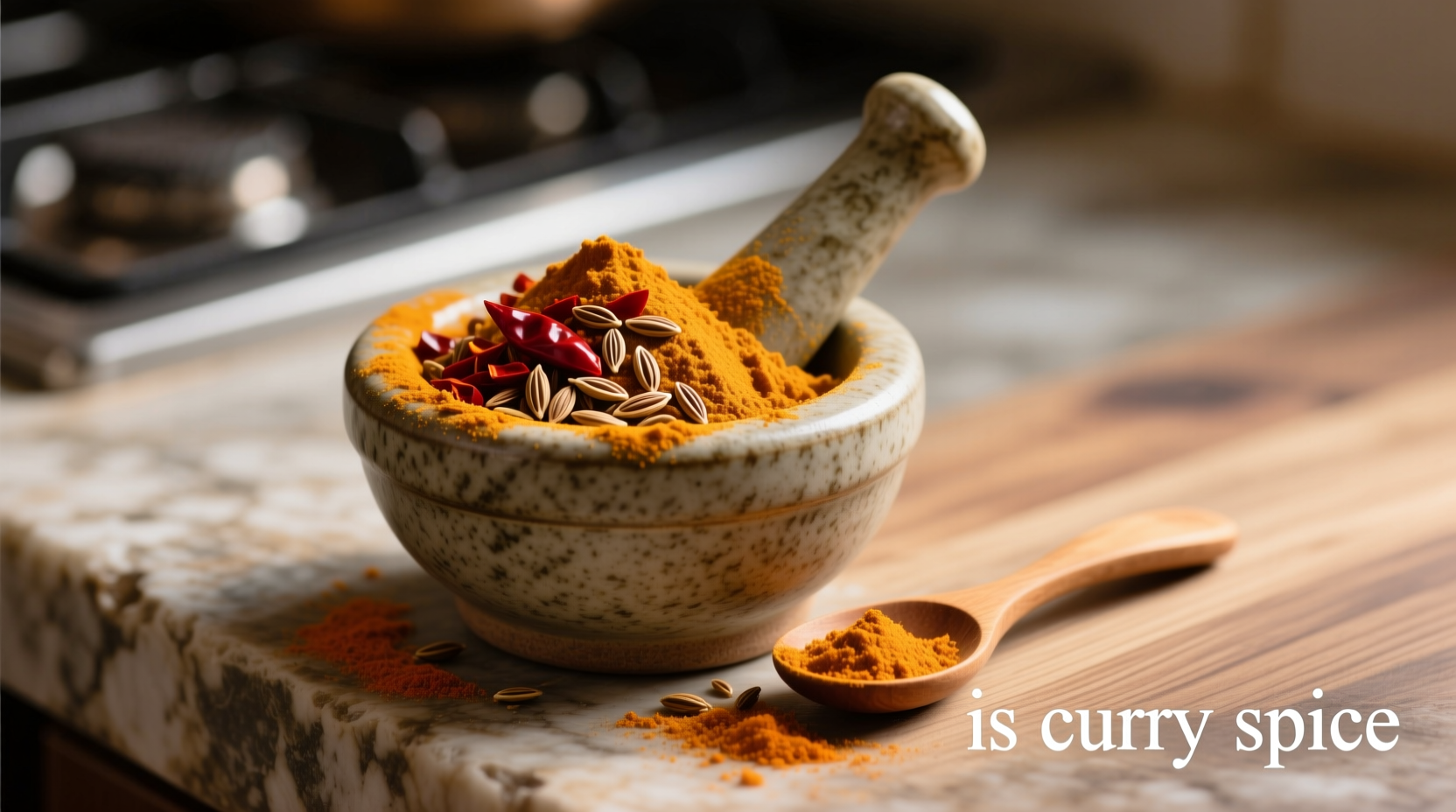Confused about whether curry is actually a spice? You're not alone. This common culinary misconception has persisted for centuries, leading many home cooks to reach for a generic 'curry powder' when attempting to recreate authentic dishes. Let's clear up the confusion once and for all and help you understand what really goes into creating those complex, aromatic flavors you love.
Understanding the Curry Misconception
The term "curry" doesn't refer to any specific spice or even a standardized blend. It's actually an anglicized version of the Tamil word "kari," which simply means "sauce" or "relish for rice." British colonists in India during the 18th and 19th centuries used "curry" as a catch-all term for the wide variety of spiced dishes they encountered across the Indian subcontinent.
According to food historians at the Oxford Symposium on Food and Cookery, the concept of "curry powder" as we know it today was largely created for the British market. As documented in Curry: A Global History by Colleen Taylor Sen, commercial curry powder blends began appearing in England around 1780, designed to replicate the complex flavors of Indian cuisine with a convenient, shelf-stable product.

What's Actually in Curry Powder?
While recipes vary significantly by brand and region, most Western curry powder blends contain some combination of these core spices:
| Common Ingredients | Flavor Profile | Typical Percentage |
|---|---|---|
| Coriander | Earthy, citrusy, slightly sweet | 25-30% |
| Turmeric | Earthy, slightly bitter, vibrant color | 15-20% |
| Cumin | Warm, nutty, slightly smoky | 10-15% |
| Fenugreek | Sweet, nutty, maple-like | 5-10% |
| Chili powder | Varies from mild to hot | 5-15% |
This standardized blend bears little resemblance to how spices are actually used in South Asian kitchens. In India, Pakistan, Bangladesh, and Sri Lanka, cooks typically create fresh spice blends for each dish using whole spices that are toasted and ground just before cooking.
Curry vs. Masala: Getting the Terminology Right
The authentic concept you're looking for isn't "curry spice" but rather "masala"—a Hindi/Urdu word meaning "mixture" or "blend." Different regions have their own signature masalas:
- Garam masala: A warming blend typically added at the end of cooking, common across North India
- Sambar powder: A South Indian blend used specifically for lentil-based vegetable stews
- Godha masala: A Maharashtrian blend featuring stone flower (dagad phool) and black sesame
- Baingan bharta masala: A specialized blend for roasted eggplant dishes
As noted by the Smithsonian's National Museum of Asian Art in their Indian Cuisine resource guide, the diversity of Indian spice blends reflects the country's regional agricultural practices and historical trade routes. No single "curry" blend exists in traditional Indian cooking.
Practical Guidance for Using Curry Powder
If you're using commercial curry powder, understanding its limitations will help you create better dishes:
When Curry Powder Works Well
- Quick weeknight meals: Curry powder provides consistent flavor for busy cooks
- Westernized dishes: Works well in dishes like British currywurst or Japanese curry rice
- Marinades: Creates reliable flavor in tofu, chicken, or vegetable marinades
When to Avoid Curry Powder
- Authentic regional dishes: Traditional Indian, Thai, or Sri Lankan recipes typically don't use pre-made curry powder
- Dishes requiring fresh spices: Many authentic recipes begin with whole spices toasted in oil
- Delicate sauces: Commercial blends can overpower subtle flavors
Creating Better Flavor with Curry Powder
Even when using commercial curry powder, you can significantly improve your results with these professional techniques:
- Bloom in oil: Heat 1-2 teaspoons of curry powder in 1 tablespoon of oil for 30-60 seconds before adding liquids. This releases volatile oils and deepens flavor.
- Layer with fresh aromatics: Add curry powder after sautéing onions, garlic, and ginger for more complex flavor development.
- Adjust acidity: Balance with lemon juice or tamarind to cut through the earthiness of turmeric and cumin.
- Add at the right time: For stews, add curry powder midway through cooking; for delicate sauces, add near the end.
According to culinary research published by the University of California's Agriculture and Natural Resources department, toasting spices—even pre-ground blends—increases the concentration of flavor compounds by up to 30% compared to using them raw.
Building Your Own Custom Curry Blend
For truly exceptional results, create your own blend tailored to specific dishes. Here's a versatile base recipe you can customize:
Basic Homemade Curry Blend
- 2 tbsp coriander seeds
- 1 tbsp cumin seeds
- 1 tbsp turmeric powder
- 1 tsp fenugreek seeds
- 1 tsp black peppercorns
- 1/2 tsp cardamom pods
- 1/2 tsp mustard seeds
- 1/4 tsp cloves
Method: Toast whole spices in a dry skillet over medium heat until fragrant (2-3 minutes). Cool completely, then grind to a fine powder. Store in an airtight container away from light.
Customize this base blend:
- For coconut-based curries: Add 1/2 tsp cinnamon and 1/4 tsp nutmeg
- For tomato-based curries: Increase cumin to 1.5 tbsp and add 1/2 tsp dried fenugreek leaves
- For vegetable curries: Add 1/2 tsp fennel seeds and 1/4 tsp asafoetida
Professional chefs recommend making small batches (enough for 2-3 uses) to ensure maximum freshness, as ground spices lose potency within 3-4 weeks.











 浙公网安备
33010002000092号
浙公网安备
33010002000092号 浙B2-20120091-4
浙B2-20120091-4